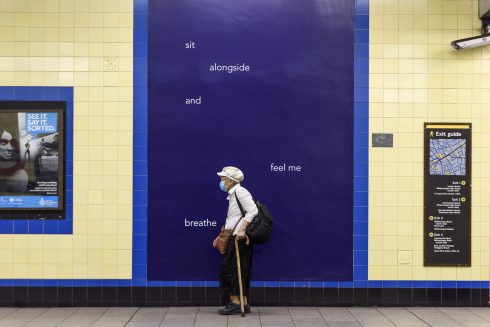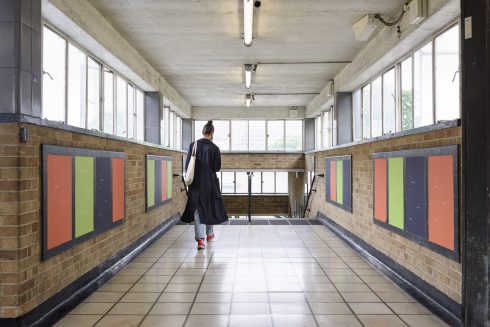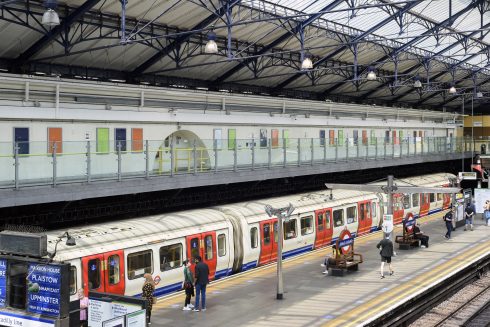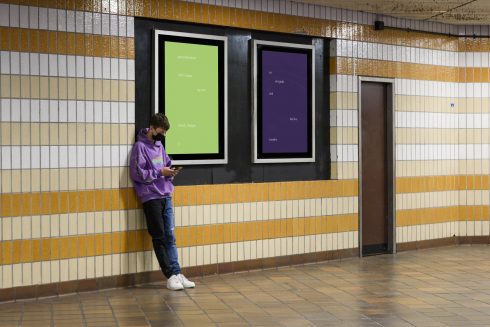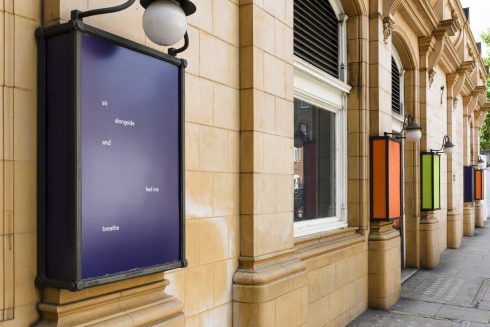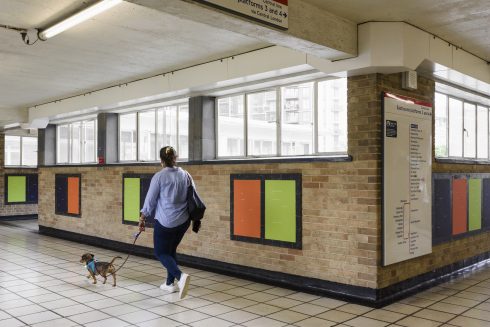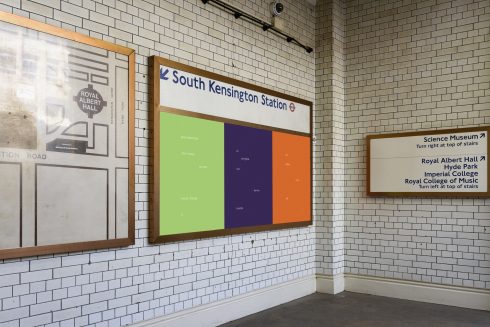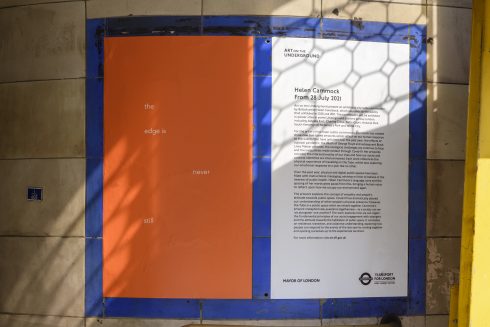Art on the Underground presents an ambitious city-wide commission by British artist Helen Cammock, which responds to the events that unfolded in 2020 and 2021. Launched on 28 July 2021 and on view for a year, the commission is exhibited in poster sites in seven Underground stations across London, including Aldgate East, Charing Cross, Earl’s Court, Holland Park, South Kensington, St James’s Park and White City.
For the artist’s first major public commission, Cammock has created three new text-based artworks which reflect on our human response to the events that unfolded in 2020 and 2021: the effects of a global pandemic; the death of George Floyd and subsequent Black Lives Matter protests; the ecological challenges we continue to face; and the inequalities made evident through Covid-19. Her artworks consider the intersectionality of our lives and how our social and political identities are interconnected. Each work references the physical experience of travelling on the Tube, whilst also exploring our emotional response to a year like no other. With her characteristic economy of language, Cammock presents a provocation for a more compassionate future.
The first work in the series reads ‘the edge is never still’, which reflects on the idea of ‘the edge’; the feeling of being ‘on edge’ and how our emotional ‘edge’ is always a shifting site has changed over the past year. The work explores the notion of the edge as being something permeable and constantly evolving over time through our individual experience. It also references the architectural space of the edge of the platform and the edge of the train. We stand in the train on a solid floor and yet the site on which we stand is moving. These edges are doing a dance of transition as we move from one space to another. The second poster in the series reads, ‘glass distortions don’t impair my view merely change it’, which plays on the idea of distortion as negative and how we transform to experience things anew. The artwork references seeing through a lens – or the windows of the Tube – and the idea of living on the inside and looking out.
The final artwork in the series reads ‘sit alongside and feel me breathe’ and explores the symbolism of ‘breath’ within crisis, which has recently taken on an increased significance due to the respiratory nature of Covid-19 and the murder of George Floyd. It asks a question about the value and worth we see in (and feel for) others and explores people’s attitude towards the habitation of public space. The artwork explores the concept of empathy and people’s attitude towards public space. Covid-19 has dramatically altered our understanding of other people’s physical presence, however, the Tube is a public space which we inhabit together. Cammock’s artwork metaphorically questions togetherness – as a society can we ‘sit alongside’ one another? The work questions how we can regain the fundamental principles of our social engagement with strangers as we begin to reinhabit shared spaces.
Over the past year, physical and digital public spaces have been filled with instructional messaging, advising on how to behave in the interest of public health. Helen Cammock’s language, tone and the spacing of her words gives pause from this, bringing a human voice to reflect upon how we occupy our environment again. Her commission ruminates on resilience, transition, and collective experience, exploring how people can respond to the events of the last year by coming together and opening ourselves up to the experiences we share.
About Helen Cammock
Helen Cammock (b.1970) works in a variety of media including printmaking, film, photography, poetry, spoken word and song. Her work explores the roles we take in moments of crisis, both as individuals and collectively. She uses lived experience to speak to wider structural concerns and explores how the cyclical nature of history and structures of power underpin the way we live. By using multiple voices, registers and dialogues her work creates fragmented, non-linear narratives that provide a condition for a different type of thinking. Cammock was shortlisted for the 2019 Turner Prize. She lives and works in Brighton.
